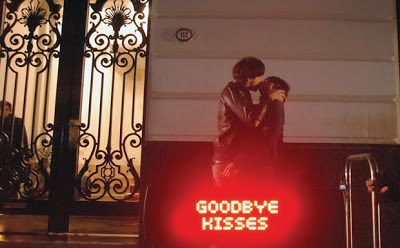The Perth Writer's Festival was this weekend passed, and in discussing with my mother the various sessions I would be attending, we lighted upon one which discussed whether it is novelists or poets who are more likely to make us swoon. Now for me, this is easily resolved: in my experience, it's always been novelists.
But is this because the only poetry I've been taught to appreciate is, though well worded, of a depressing nature, focusing not on the beauty of life and love, but on the misery and suffering it can inflict upon some. Take for instance Gwen Harwood's 'Home of Mercy'. It is a thought provoking poem, but its topic is the plight of unmarried mothers forced into a home of mercy where they are make to feel more acutely the social degradation of their situation. And when read from even the slightest of feminine viewpoints its complete absence of menfolk highlights the gender imbalance that we in part are still fighting to this day. Or take John Donne's 'The Apparition', a poem about sexual revenge in the form of syphilis. Even his poems of love fail to rejoice in the beauty of life but instead focus upon the depressing fact of the objection of his lover's father.
In fact, very little of what I studied in English Literature would be deemed as positive reading. The poetry was melancholy and the plays tragic. In three years, the only Shakespeare we studied were three tragedies: Romeo and Juliet, Othello and Macbeth. Shakespeare is renown for the breadth of his plays. He wrote histories and comedies in addition to his tragedies, and yet it is the tragedies alone that we are forced to study on a yearly basis. We are allowed to enjoy the comedy of Juliet's nurse, and the tertiary actors, but only in amongst the greater context of two love lorn teenagers who disregard their parents and take things into their own hands with tragic consequences.
And yet, while we focus upon these stories of murder, deception, youth suicide, injustice... we still wonder why the youth of today are so depressed and so often fail to see the beauty in the world around us.
Is it simply because we've been trained that way?
But is this because the only poetry I've been taught to appreciate is, though well worded, of a depressing nature, focusing not on the beauty of life and love, but on the misery and suffering it can inflict upon some. Take for instance Gwen Harwood's 'Home of Mercy'. It is a thought provoking poem, but its topic is the plight of unmarried mothers forced into a home of mercy where they are make to feel more acutely the social degradation of their situation. And when read from even the slightest of feminine viewpoints its complete absence of menfolk highlights the gender imbalance that we in part are still fighting to this day. Or take John Donne's 'The Apparition', a poem about sexual revenge in the form of syphilis. Even his poems of love fail to rejoice in the beauty of life but instead focus upon the depressing fact of the objection of his lover's father.
In fact, very little of what I studied in English Literature would be deemed as positive reading. The poetry was melancholy and the plays tragic. In three years, the only Shakespeare we studied were three tragedies: Romeo and Juliet, Othello and Macbeth. Shakespeare is renown for the breadth of his plays. He wrote histories and comedies in addition to his tragedies, and yet it is the tragedies alone that we are forced to study on a yearly basis. We are allowed to enjoy the comedy of Juliet's nurse, and the tertiary actors, but only in amongst the greater context of two love lorn teenagers who disregard their parents and take things into their own hands with tragic consequences.
And yet, while we focus upon these stories of murder, deception, youth suicide, injustice... we still wonder why the youth of today are so depressed and so often fail to see the beauty in the world around us.
Is it simply because we've been trained that way?










